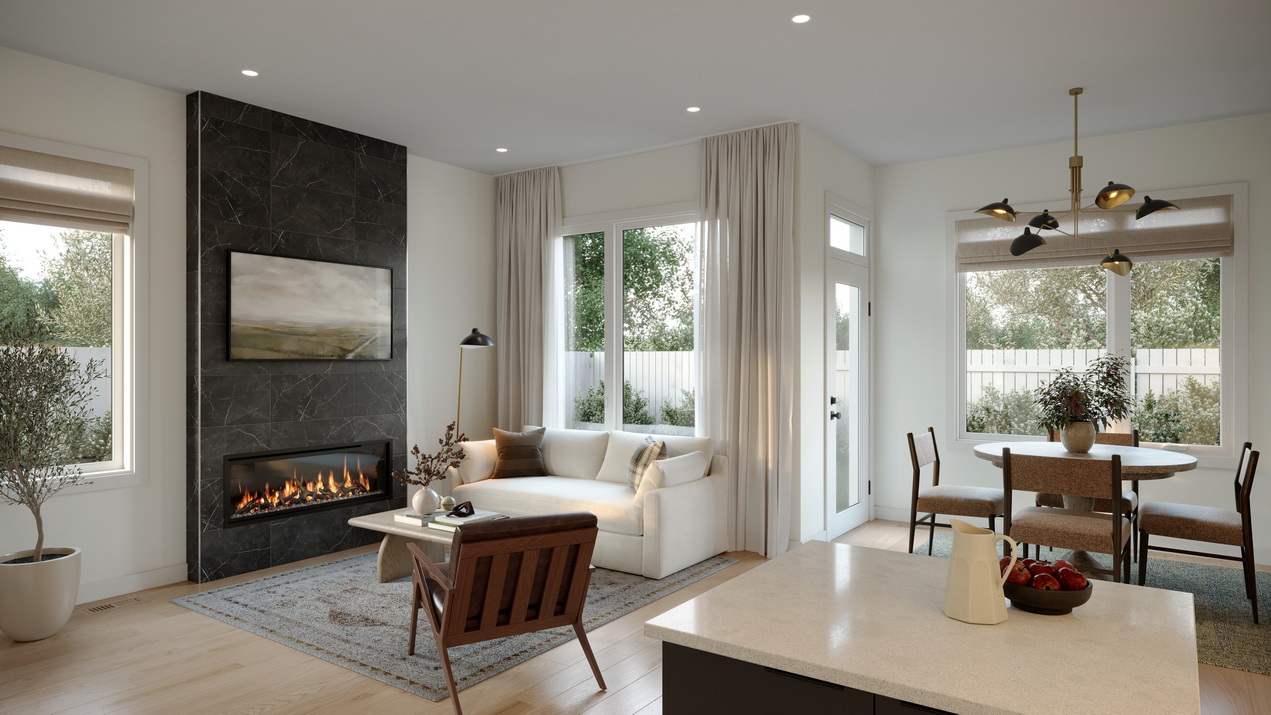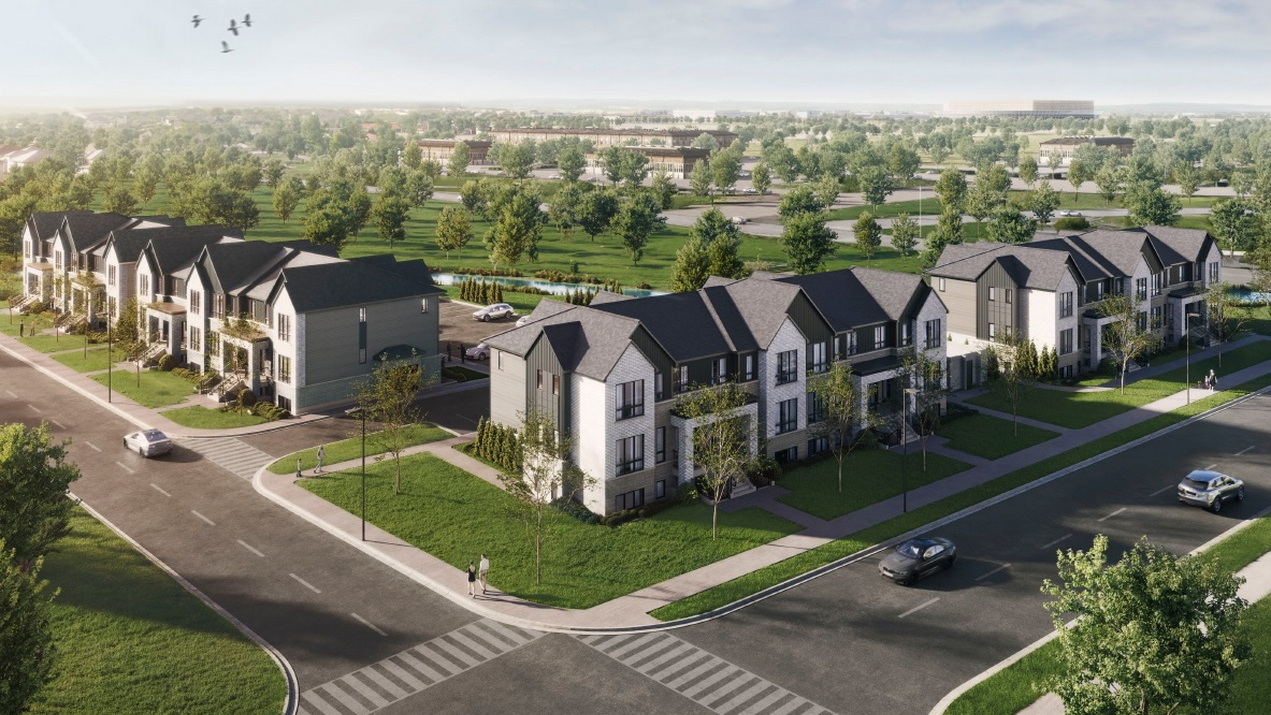Pared-down singles and towns, smaller floor plans, an explosion of back-to-back condo towns, incentives to buy, even negotiating — builders are trying just about everything to bring affordability back to homes and reach buyers who have been priced out of the market or are simply sitting on the fence waiting for things to improve.
“We and every other builder have been scrambling to constantly reimagine things and to figure out what is going to be the right value proposition for buyers,” says Rahul Kochar, vice-president of operations at Phoenix Homes.
It’s been a tough couple of years in the housing market since it collapsed in the spring of 2022. Granted, that collapse was preceded by a frenzy of buying and ever-escalating prices that took root back in 2017 and was only briefly halted by the arrival of the COVID-19 pandemic.
But the collapse was not accompanied by a similar drop in home prices. They have eased up a bit since the collapse:
- New-build singles dropped an average of four per cent this April compared to April 2023 to reach $985,000, according to Cheryl Rice from industry analyst PMA Brethour Realty, who called it “a throwback to 2022 average pricing.” In comparison, the average single-family home price in 2018 (the first year PMA began collecting averages) was $554,320.
- Townhomes fell an average of eight per cent from last year to $679,000 (it was $368,503 in 2018).
- And condo towns saw the largest decrease of 20 per cent in the past year, with an average price of $437,000, which is close to early 2021 pricing. (In 2018 it was $389,676.)
But coupled with interest rates that escalated right around the time the market collapsed, it means entering or moving up in the housing market has been a challenge, even though the Bank of Canada this month finally started to reduce its key rate, which affects mortgage rates.
Builder Frank Nieuwkoop, owner of Valecraft Homes, uses the example of his own single-family home that he bought in 2001 for $217,000. “That same house in Bridlewood is now worth over $1 million. In 20 years, we’ve seen prices that have quadrupled” in a period where they would normally double.
The prolonged sales drought has prompted builders to get creative with what they can offer buyers to bring homes back into a more affordable range, particularly for first-time buyers.
“Affordability is driving all of this,” says Tanya Buckley, vice-president of sales and marketing at Cardel Homes. “A lot of us, in order to meet price point, we’re redesigning product, we’re looking at the specifications to try to reduce costs, all while looking at the plans to say, ‘How can you maximize value out of your space?’”
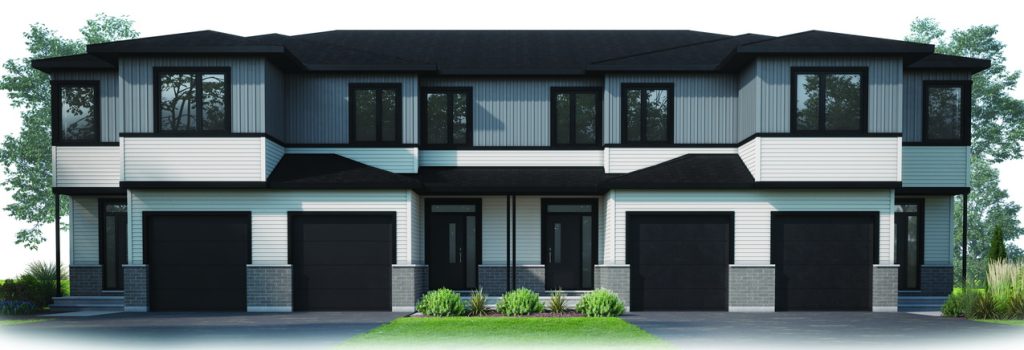
Cardel’s response was to introduce its Essential Series townhomes, which were released at EdenWylde in Stittsville at the beginning of May. With smaller square footage and scaled-back finishes, the three-bedroom towns retain the flexibility of Cardel’s larger executive towns (including the option for a basement bedroom and bathroom), just in a smaller footprint of either 1,546 or 1,676 square feet. At the time of writing, they were starting at $579,000.
“You’re only paying for what you need,” says Cardel sales manager Betsy Leeks, adding that buyers have been “floored by the price. We had a few people actually ask if there was a typo.”
eQ Homes made a similar move with its Modern Townhomes series, eliminating the finished basement, for instance, “to save some money so people can actually get into a townhouse,” says Tobin Kardish, director of marketing and product development.
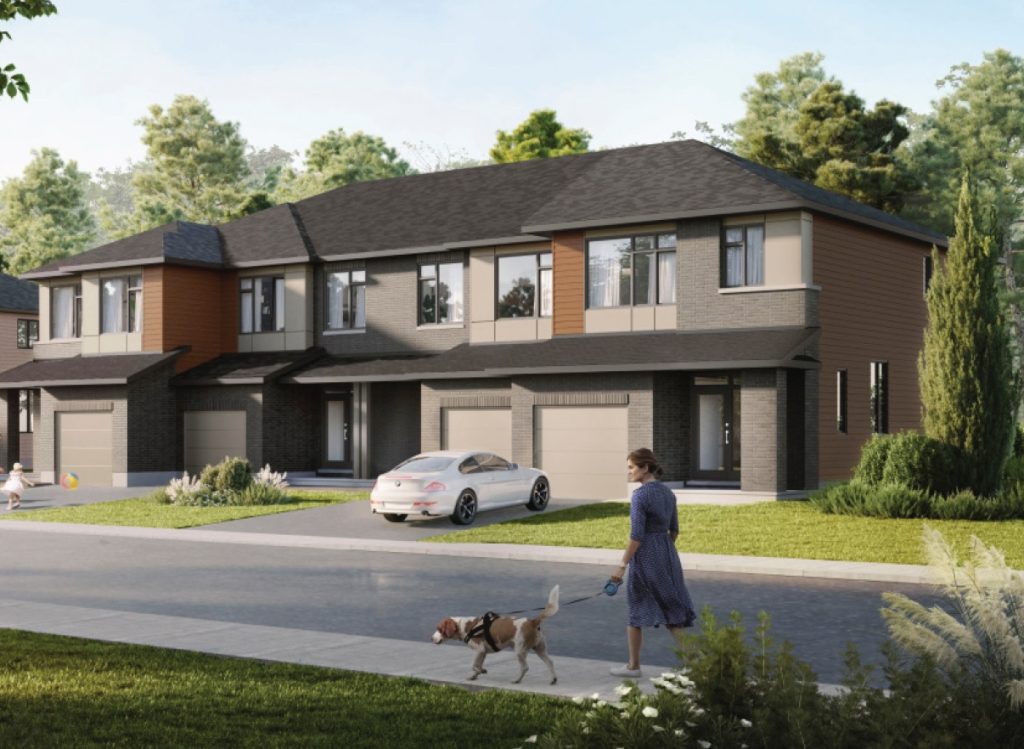
And just this month Richcraft Homes released its Thrive series of towns that, at the time of writing, were starting at $589,900. While, like other townhome examples, the basement is unfinished and flooring is luxury vinyl plank instead of hardwood, Richcraft still includes quartz counters in the kitchen.
MORE: Floor plans are shifting to meet diverse buyer needs
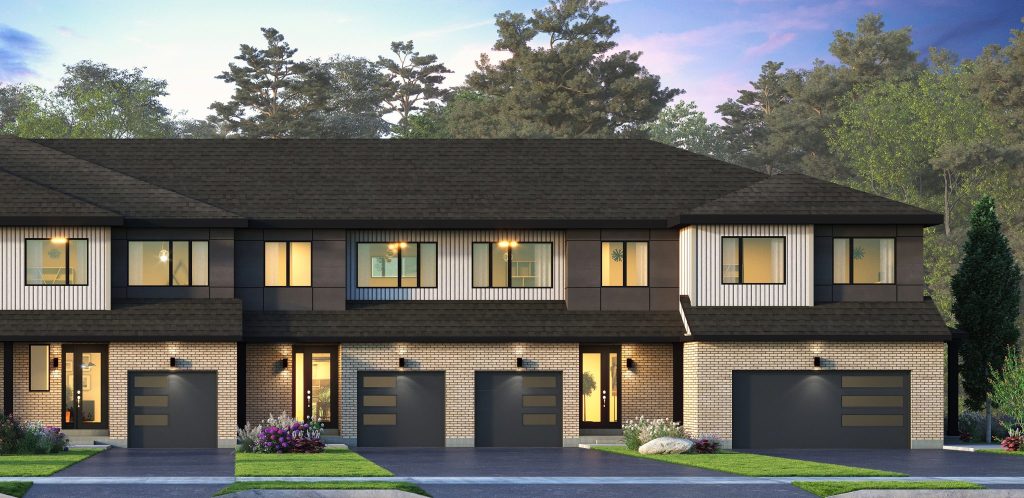
Several builders have introduced variations on back-to-back townhomes as a more affordable alternative to the traditional townhome that still offers a private entrance. Often condo towns, they have proven to be particularly popular.
The latest quarterly market report prepared by PMA Brethour for the Greater Ottawa Home Builders’ Association shows a huge jump in the sale of condo towns. In the first quarter of 2024, they made up 17 per cent of new-home sales, compared to just two per cent last year and one per cent in 2022.
Condo towns have actually been popular for the past year, beginning with Minto Communities’ exceptional timing in introducing its Metro Towns early last year to a buying public desperate for something they could afford. Initially offered at under $400,000, Minto saw repeated sellouts on release days for these two-bedroom, two-bathroom homes.
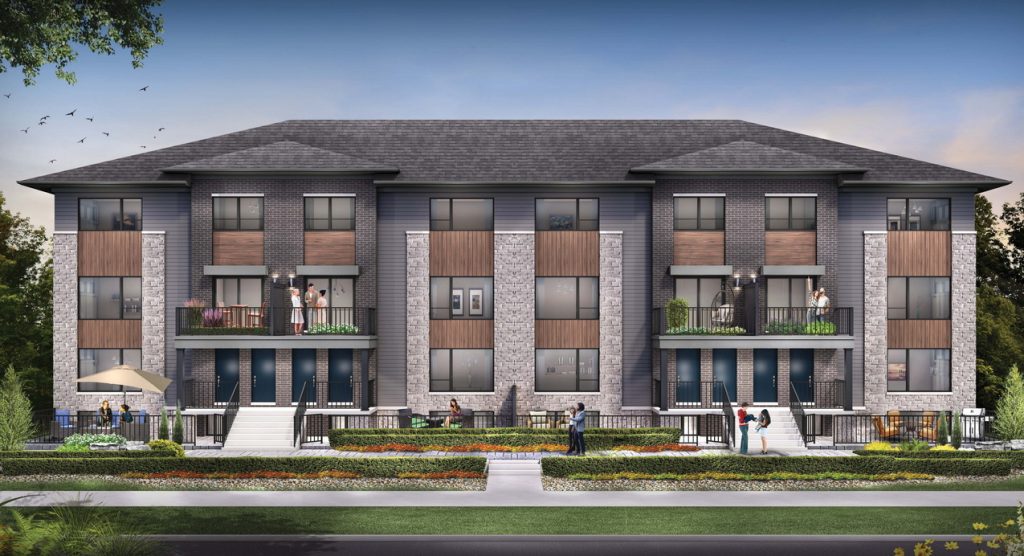
“There was a little bit of luck on the timing of it,” acknowledges Anthony Minchella, vice-president of sales and marketing. Some 18 months in development, “by the time we had it ready to come to sale, interest rates started going up and we were just almost at the perfect time to release.”
In the year that Minto has been selling Metro Towns, they’ve sold more than 300 of them between the builder’s developments at Anthem in Barrhaven and Parkside at Arcadia in Kanata, representing a third of Minto’s overall sales in the city.
Back-to-back towns are also a staple for several other builders, such as Mattamy Homes, which offers both stacked and three-storey versions at many of its developments.
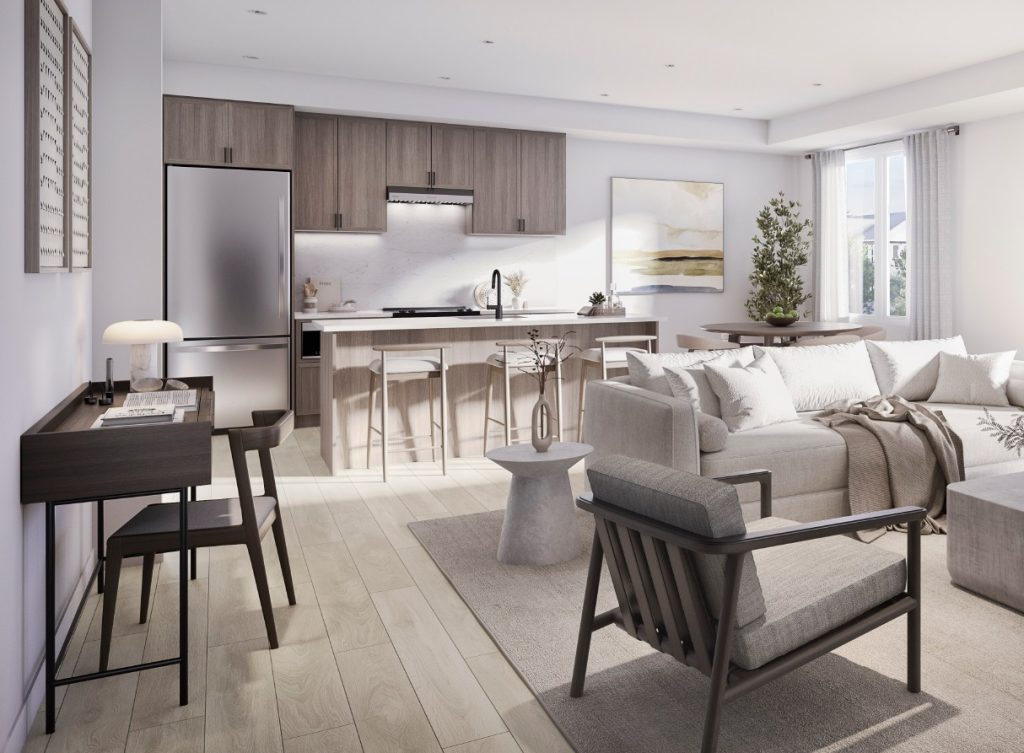
Richcraft has introduced a back-to-back line called Gateway Flats at Mapleton in Kanata (and soon to be released at Trailsedge in Orléans) that starts under $400,000 and offers more than 1,000 square feet and two bedrooms on one level. The builder has offered three-storey back-to-back towns for some time.
Even HN Homes unveiled in April a series of three-storey, back-to-back townhomes — a first for the high-end builder — as a more affordable entry point for buyers in Riverside South.
“We’re trying to be responsive,” says president George Georgaras, while sticking to HN’s elevated standard features and finishes.
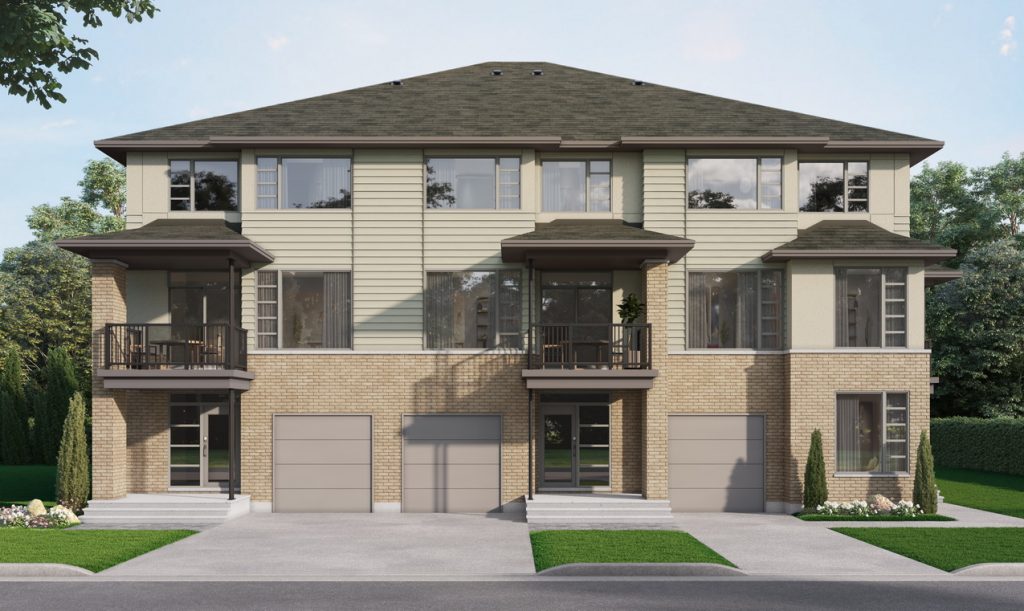
“We want people to have what they need without going through an extensive upgrade process,” adds Vasi Jackson, HN’s sales and marketing manager.
MORE: HN introduces Urban Towns in Riverside South
HN’s frequent building partner, Urbandale Construction, is also working on a three-storey back-to-back town — like HN, it’s a first for them — but details are still sparse. Operations manager Melissa Boudreau expects the homes to be released later this year.
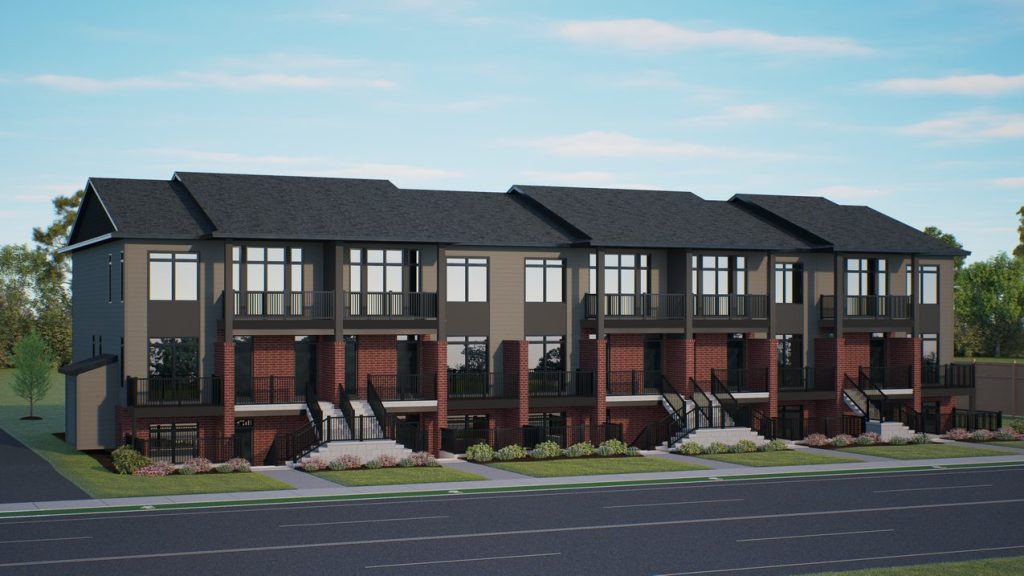
Urbandale is also pre-building condo flats at Cowan’s Grove that will be ready for sale likely this summer. Ranging from about 1,100 to 1,200 square feet with two bedrooms and two bathrooms, they’re expected to start in the low $400,000s.
“We’ve seen a really good response,” Boudreau says.
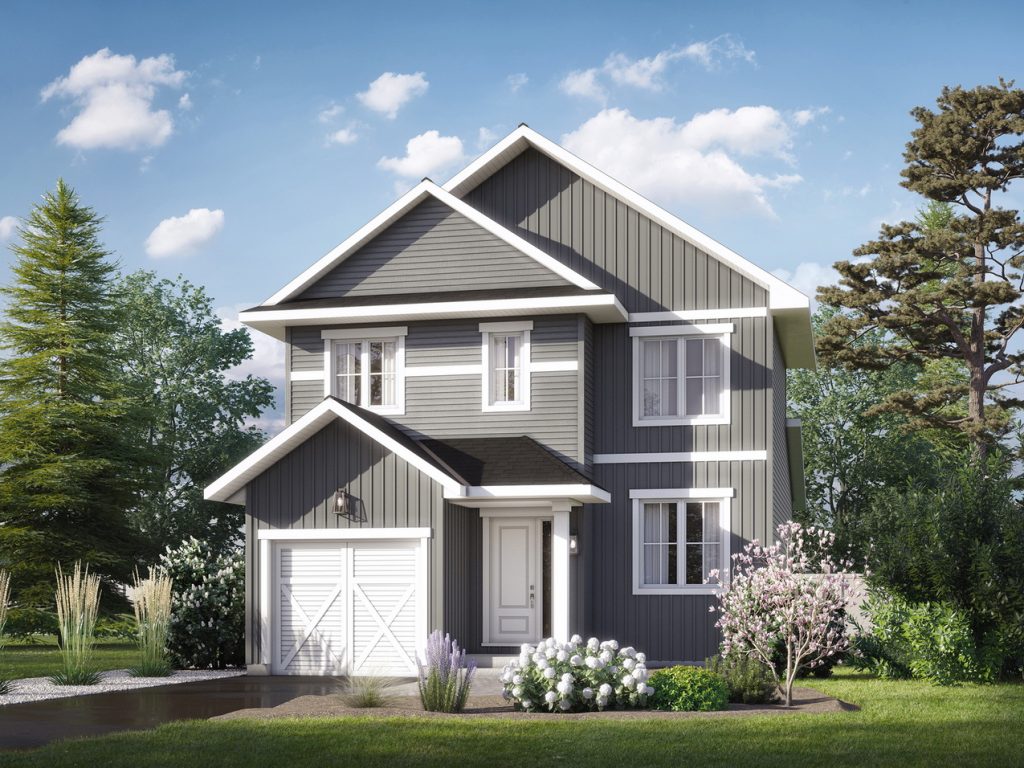
But it’s not just townhomes that are seeing a shift. Even singles are getting a new look, with Phoenix Homes, in particular, releasing its Leap Series in May that offers both bungalows and two-storey singles on 35-foot lots at Pathways at Findlay Creek in the south end for the low $700,000s.
“We’re trying to help buyers leap from a townhome to a single,” says Kochar. “The idea was to create as affordable singles as we could with — as other builders have done — revised spec sheets (or included features and finishes) that are specific to this series.”
Ranging from 1,499 to 2,111 square feet and three to five bedrooms, they include finished basement spaces “so that we can show the immediate square footage-to-price ratio is really good.” (Phoenix also has several other affordable housing options besides the Leap Series.)
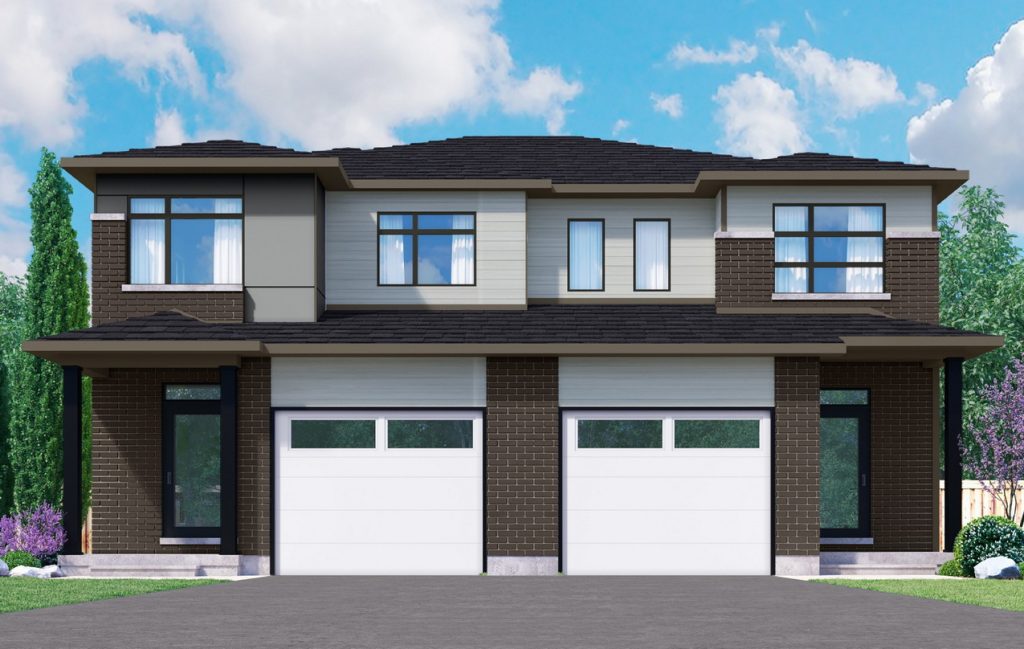
Tartan Homes offers its redesigned semi-detached homes as “a nice in-between for people who cannot afford a single,” says sales manager Kyrie Warren. They give you the space, flexibility and privacy of a single — including room for a pool — at a more affordable price, she says.
Offered at Idylea in Stittsville and planned for Findlay Creek Village later this year, they range from 2,047 to 2,576 square feet and include options for a basement bedroom, bathroom and rec room as well as work-from home areas.
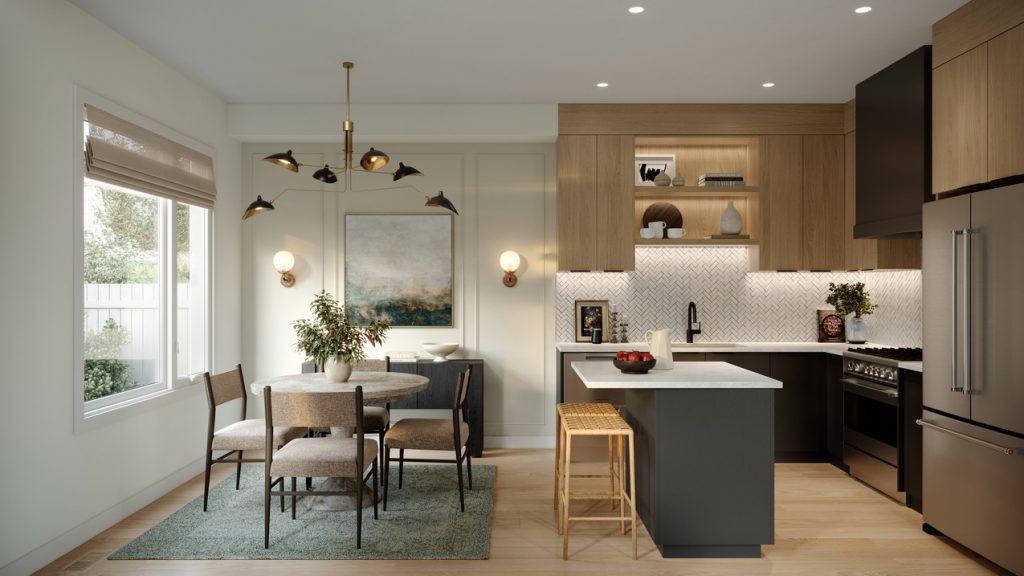
Caivan has been able to regularly offer townhomes under $520,000 and singles under $600,000 this spring thanks in part to the innovative factory-built process developed by its sister company, Advanced Building Innovation Company, or ABIC, which utilizes artificial intelligence, robotics and proprietary software to maximize efficiencies in time, workforce deployment and material use to build homes faster and more economically.
“Using our advanced manufacturing process at our ABIC plant, we’ve been able to bring these homes to the market quickly and create affordability for buyers thanks to efficient production,” says Jonathan Wiseman, executive vice-president of sales and marketing at Caivan.
Valecraft Homes is taking a different approach, focusing on discounting upgrades in homes, arranging for lower mortgage rates for the first few years or even negotiating on price rather than scaling down the size of the home or its finishes.
“I’d rather negotiate those things for people than take out the quality in the house,” says Nieuwkoop. At the time of writing, Valecraft had townhomes starting at just over $600,000.
While it remains to be seen what effect we’ll see from the Bank of Canada’s beginning to lower its key rate, many are optimistic it will encourage buyers back into the housing market. And with an increase in more affordable housing choices, that should help, too.
“I am a firm believer that once rates start to come down (it) will bring confidence back to the market,” says Minchella, “The power has shifted to the buyer; there’s a lot of selection out there.”
